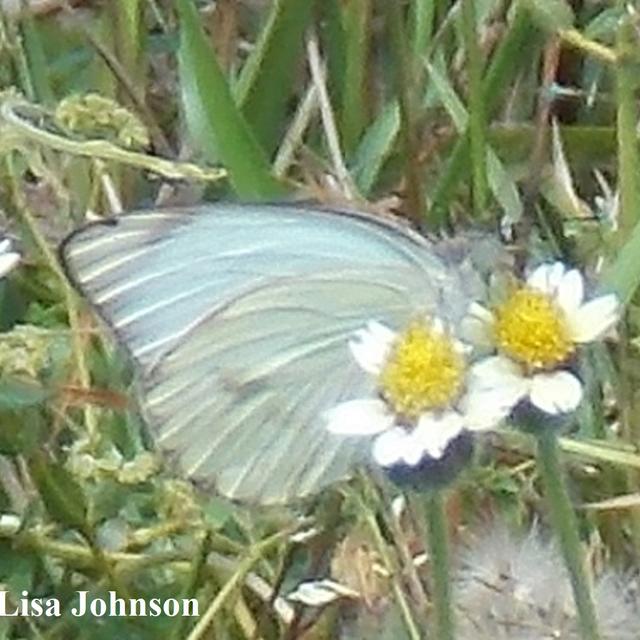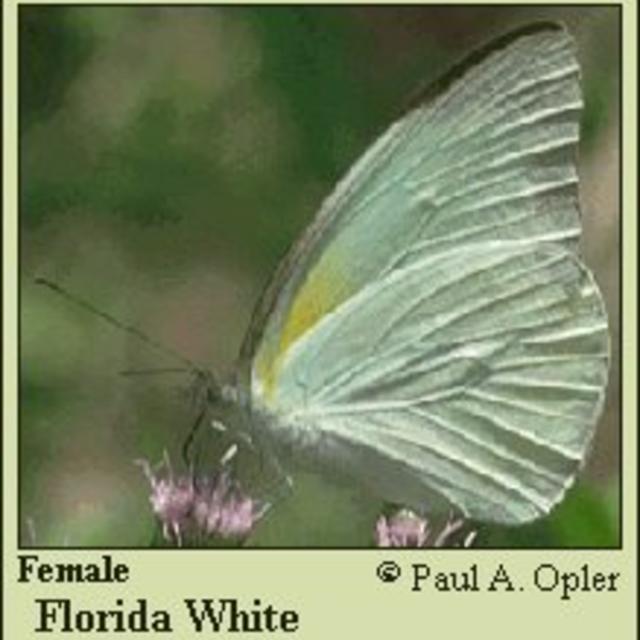Florida White
Appias drusilla (Cramer, 1777)
Family: Pieridae
Subfamily: Pierinae
Identification: Male is solid white on both upper and lower surfaces of wings except for a narrow edging of black along the forewing costal margin. Female has 2 forms: the dry-season form is all white; the wet season form has black along the forewing costal margin and a yellow-orange upper hindwing.
Wing Span: 2 1/8 - 3 inches (5.3 - 7.7 cm).
Life History: Males patrol with erratic flight, searching for females. Females lay single eggs at tips of developing host plant leaves. Caterpillars are shade-loving and feed during the night and on cloudy days.
Flight: Dry-season form from October-April, wet-season form from May-September.
Caterpillar Hosts: Various plants in the family Putranjivaceae and family Brassicaceae, including Guiana plum (Drypetes lateriflora) and Limber Caper or Bayleaf Capertree (Capparis flexuosa) in Florida.
Adult Food: Flower nectar from a variety of weeds and garden plants including lantana and eupatorium.
Habitat: Tropical lowland evergreen or semideciduous forests.
Range: Tropical America from Brazil north to southern peninsular Florida and the Keys; Antilles. Frequently visits coastal Texas, rare stray to Nebraska and Colorado.
Conservation: Preserve hardwood hammock habitat in southern Florida.
NCGR: G5 - Demonstrably secure globally, though it may be quite rare in parts of its range, especially at the periphery.
Management Needs: Avoid mosquito fogging near this butterfly\'s habitat.
Comments: Edited food plants as per John Calhoun email (9/2009).
Get your BAMONA Gear!
Please donate!
We depend on donations to keep Butterflies and Moths of North America freely available. We want to express our gratitude to all who showed their support by making a contribution this year. You can donate to support this project at any time.
Advertise with us!
Do you have a product or service that you think would interest BAMONA users? If you would like to advertise on this website, contact us by email, or use the contact form and select the "Advertising" category.
Verified Sightings
Displaying 1 - 24 of 106 verified sightings

Observation date: Jan 06, 2005
Submitted by: Charlie Doggett
Region: Monroe County, Florida, United States
Verified by: Charlie Doggett
Verified date: Feb 29, 2024

Observation date: Jan 27, 2024
Submitted by: Paul Prappas
Region: Tabasco, Mexico
Verified by: Paul Prappas
Verified date: Jan 30, 2024
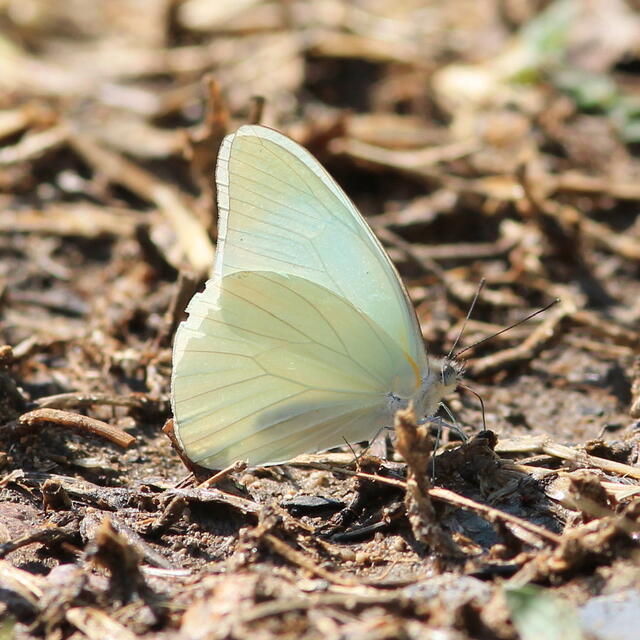
Observation date: Dec 01, 2022
Submitted by: jrmbutterfly
Region: Nayarit, Mexico
Verified by: Paul Prappas
Verified date: Mar 03, 2023
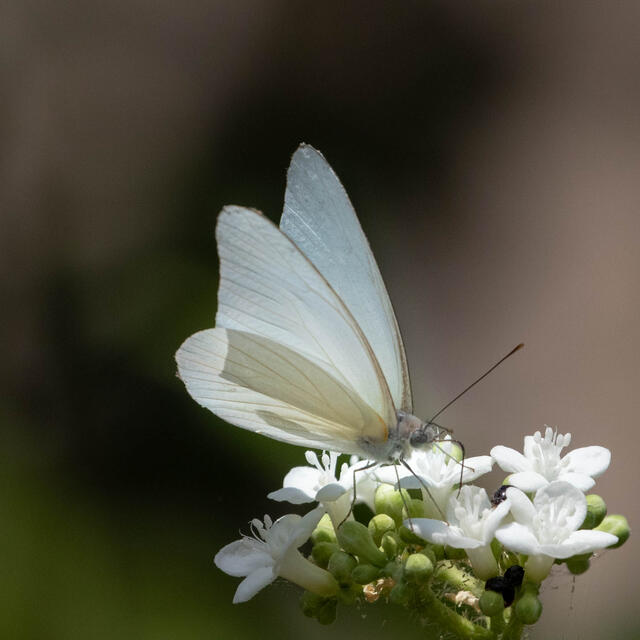
Observation date: May 07, 2021
Submitted by: hasfitz5
Region: Quintana Roo, Mexico
Verified by: Paul Prappas
Verified date: Feb 12, 2023
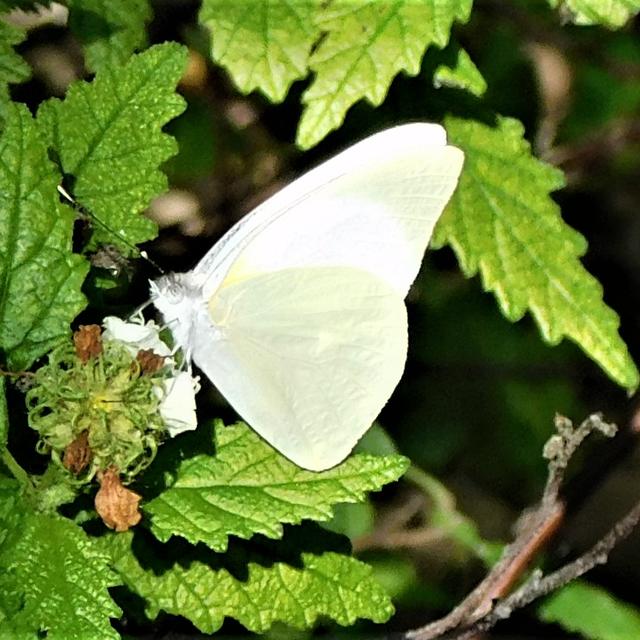
Observation date: Jan 04, 2023
Submitted by: Sue Bocchicchio
Region: Monroe County, Florida, United States
Verified by: John Calhoun
Verified date: Jan 04, 2023
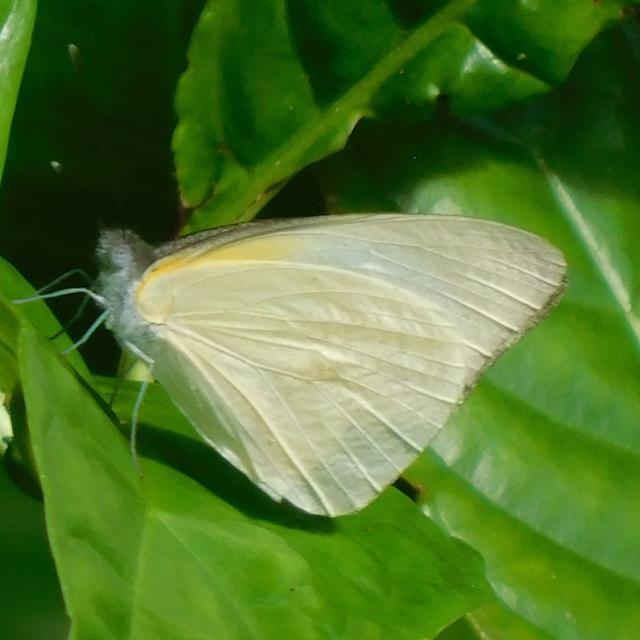
Observation date: Dec 02, 2022
Submitted by: Sue Bocchicchio
Region: Monroe County, Florida, United States
Verified by: John Calhoun
Verified date: Dec 02, 2022
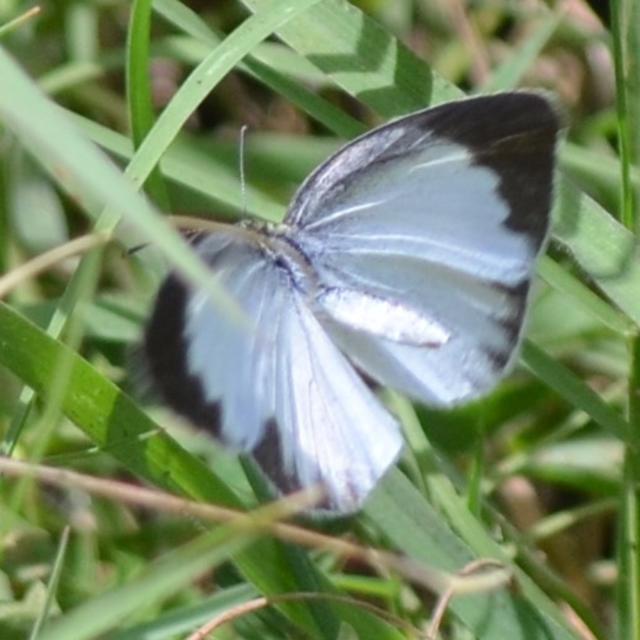
Observation date: Dec 06, 2017
Submitted by: bobscafe
Region: Costa Rica
Verified by: Charlie Doggett
Verified date: Oct 26, 2022

Observation date: Jul 03, 2017
Submitted by: Steven Koevoet
Region: Quintana Roo, Mexico
Verified by: Paul Prappas
Verified date: Oct 24, 2022
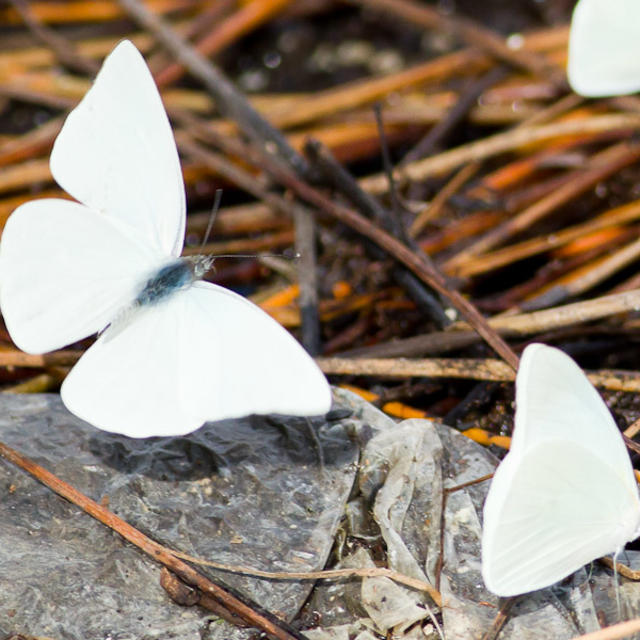
Observation date: Feb 13, 2014
Submitted by: janazak
Region: Quintana Roo, Mexico
Verified by: Paul Prappas
Verified date: Oct 15, 2022

Observation date: Feb 15, 2014
Submitted by: janazak
Region: Quintana Roo, Mexico
Verified by: Paul Prappas
Verified date: Oct 15, 2022

Observation date: Jul 15, 2017
Submitted by: ncrosbyrd
Region: Chiapas, Mexico
Verified by: Paul Prappas
Verified date: Oct 11, 2022
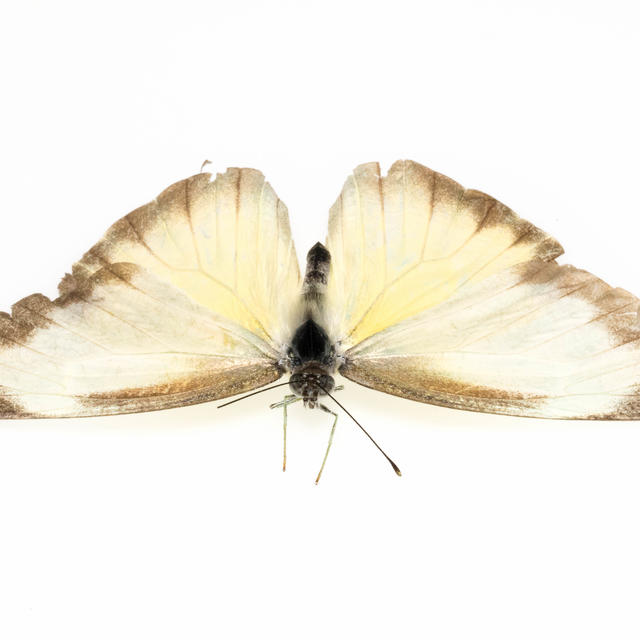
Observation date: Aug 30, 2021
Submitted by: Janeal W. Thompson
Region: Prowers County, Colorado, United States
Verified by: mikefisher
Verified date: Nov 06, 2021

Observation date: Aug 11, 2018
Submitted by: Mark Salvato
Region: Monroe County, Florida, United States
Verified by: John Calhoun
Verified date: Oct 29, 2021

Observation date: Jul 29, 2021
Submitted by: Mark Salvato
Region: Monroe County, Florida, United States
Verified by: John Calhoun
Verified date: Aug 05, 2021

Observation date: Jul 29, 2021
Submitted by: Rob Wu
Region: New Mexico, United States
Verified by: stevecary
Verified date: Aug 01, 2021

Observation date: Nov 15, 2020
Submitted by: sherylsr
Region: Blanco County, Texas, United States
Verified by: stomlins701
Verified date: Dec 09, 2020

Observation date: Nov 24, 2020
Submitted by: cklindsey
Region: Monroe County, Florida, United States
Verified by: John Calhoun
Verified date: Nov 30, 2020

Observation date: Jan 23, 2020
Submitted by: Raul Delgado
Region: Texas, Webb County, United States
Verified by: stomlins701
Verified date: Jan 28, 2020
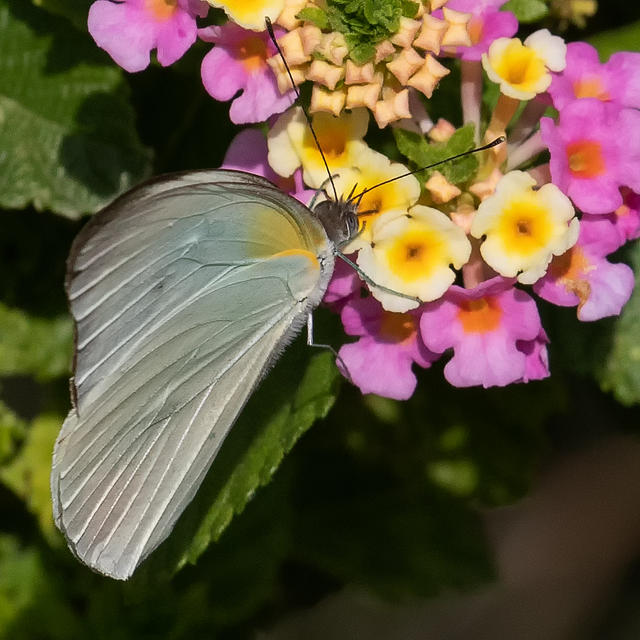
Observation date: Dec 09, 2019
Submitted by: Craig M Lipski
Region: Hidalgo County, Texas, United States
Verified by: stomlins701
Verified date: Dec 24, 2019

Observation date: Jun 28, 2019
Submitted by: Markus M
Region: Jalisco, Mexico
Verified by: Doug Taron
Verified date: Sep 05, 2019
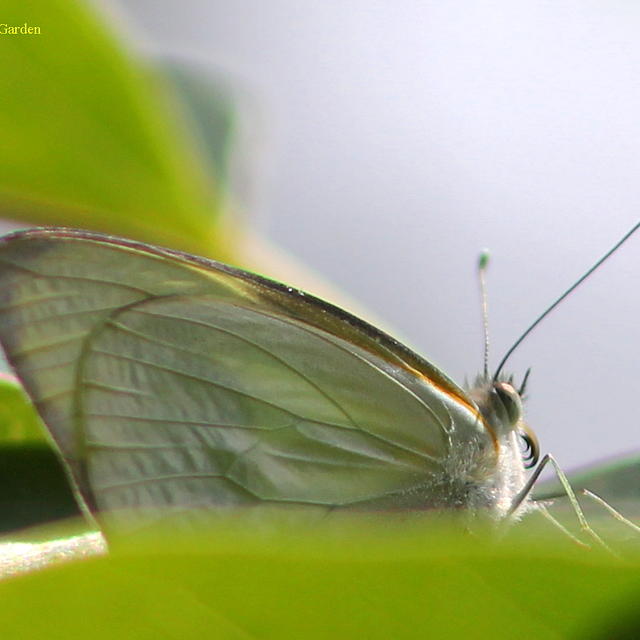
Observation date: Apr 10, 2018
Submitted by: wallap74
Region: Monroe County, Florida, United States
Verified by: John Calhoun
Verified date: Apr 26, 2018
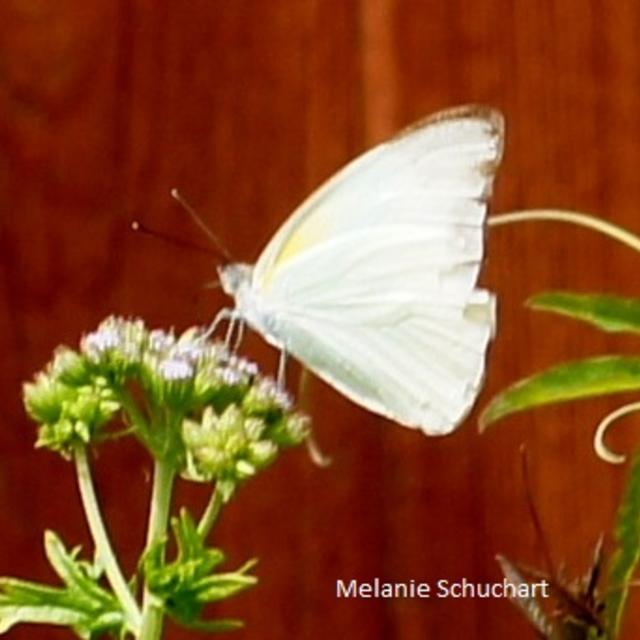
Observation date: Apr 13, 2017
Submitted by: butterflies4fun
Region: Collin County, Texas, United States
Verified by: stomlins701
Verified date: May 25, 2017
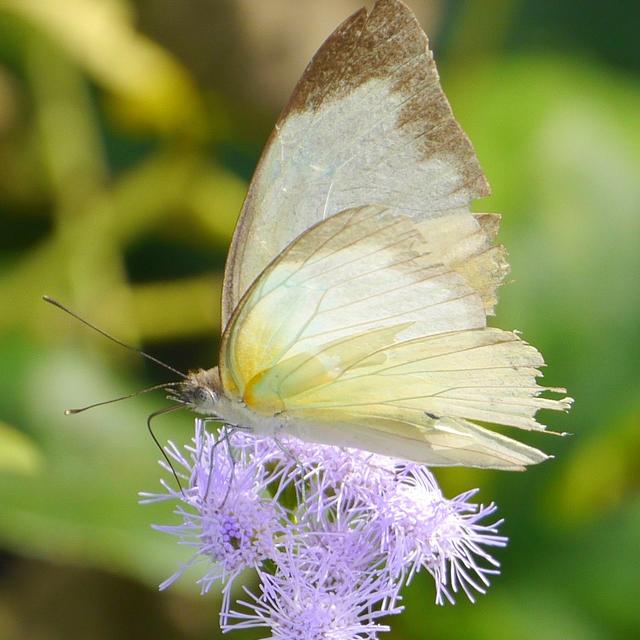
Observation date: Oct 25, 2016
Submitted by: taogirl
Region: Texas, Tarrant County, United States
Verified by: stomlins701
Verified date: Oct 27, 2016

Observation date: Aug 07, 2016
Submitted by: ncrosbyrd
Region: Hidalgo County, Texas, United States
Verified by: stomlins701
Verified date: Aug 25, 2016
- 1 of 5
- next ›

